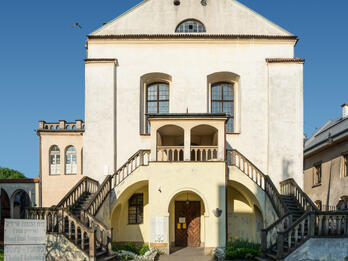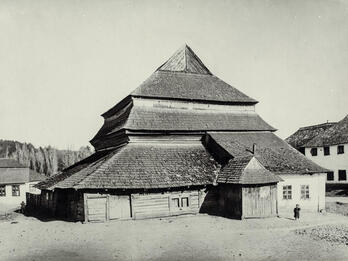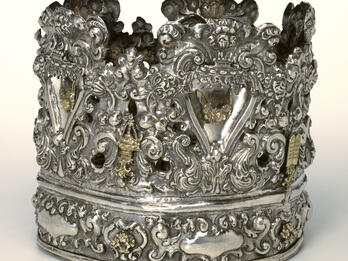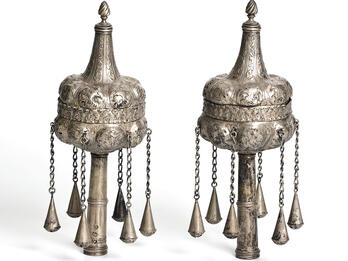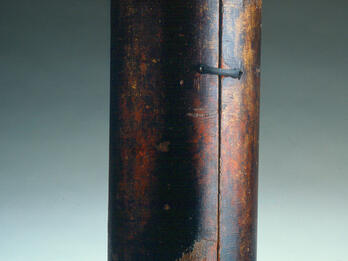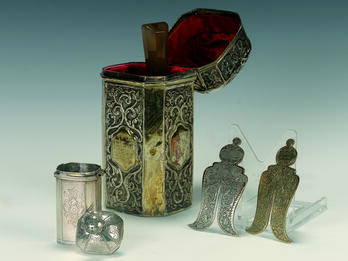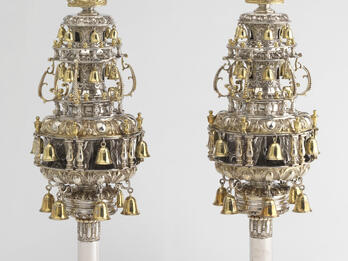Showing Results 1 - 10 of 68
Restricted
Text
1. “If you’re planting a tree and you hear Mashiah has come, first finish planting and then run to the city gates to tell him Shalom” (Yochanan Ben Zakkai).
Therefore: Plant a tree somewhere as a…
Contributor:
Arthur Waskow
Places:
Philadelphia, United States of America
Date:
1973
Subjects:
Categories:
Restricted
Text
In the new religious revival, the theologians and philosophers have it easy; they can battle about the nature of revelation endlessly in the pages of Commentary. Parents and householders, on the other…
Contributor:
Ruth Gay
Places:
New York, United States of America
Date:
1951
Subjects:
Categories:
Restricted
Text
I am a friend to all lovers of Torah and wisdom and my only desire and my complete salvation rest in disseminating the sources of the Torah in order that the earth will be full of the knowledge of God…
Contributor:
Samuel David Luzzatto
Places:
Padua, Austrian Empire (Padova, Italy)
Date:
1851
Subjects:
Categories:
Restricted
Image
The Isaac (or Izaak) Synagogue in Kraków was built in 1638–1644. Sources differ about who designed the building, but it was likely either the Italian architect Francisco Olivieri or Swiss-born…
Contributor:
Artist Unknown
Places:
Kraków, Polish-Lithuanian Commonwealth (Kraków, Poland)
Date:
1638–1645
Subjects:
Categories:
Restricted
Image
Wooden synagogues were a distinctive style of vernacular architecture that first developed in the lands of the Polish-Lithuanian Commonwealth in the sixteenth century and then flourished in the…
Contributor:
Photographer Unknown
Places:
Gwoździec, Polish-Lithuanian Commonwealth (Hvizdets, Ukraine)
Date:
Mid–17th Century
Subjects:
Categories:
Restricted
Image
This silver Torah crown from Padua, Italy, is decorated with images of the tablets of law, incense utensils, the ark of the covenant,
and the headdress of the high priest.
Contributor:
Artist Unknown
Places:
Padua, Venice (Padua, Italy)
Date:
17th–18th Century
Subjects:
Categories:
Restricted
Image
These silver Torah finials are from Corfu and were made between the seventeenth and eighteenth centuries, by an artist whose initials were A.Z. They were used in the Scuola Greca Synagogue, which…
Contributor:
A.Z.
Places:
Kérkyra (Corfu), Ottoman Empire (Corfu, Greece)
Date:
Late 17th–Early 18th Century
Subjects:
Categories:
Restricted
Image
This lacquered, cylindrical case for a Torah scroll was made from a combination of wood, bronze, and iron in Kaifeng, China. (The hard-sided Torah case was a Sephardic tradition. It offered more…
Contributor:
Artist Unknown
Places:
Kaifeng, Qing Dynasty (Kaifeng, China)
Date:
17th or 18th Century
Subjects:
Categories:
Restricted
Image
This silver circumcision set was crafted in Salonika in the Ottoman Empire. The cylindrical silver casket holds a circumcision knife; its handle is made from agate. A similarly shaped powder box and…
Contributor:
Artist Unknown
Places:
Salonika, Ottoman Empire (Thessaloniki, Greece)
Date:
18th Century
Subjects:
Categories:
Restricted
Image
These richly decorated Torah finials (rimonim), cast in silver and partly gilt, and adorned with many bells and topped with crowns, were created in London. The non-Jewish silversmith William Spackman…
Contributor:
William Spackman
Places:
London, Great Britain (London, United Kingdom)
Date:
1719



